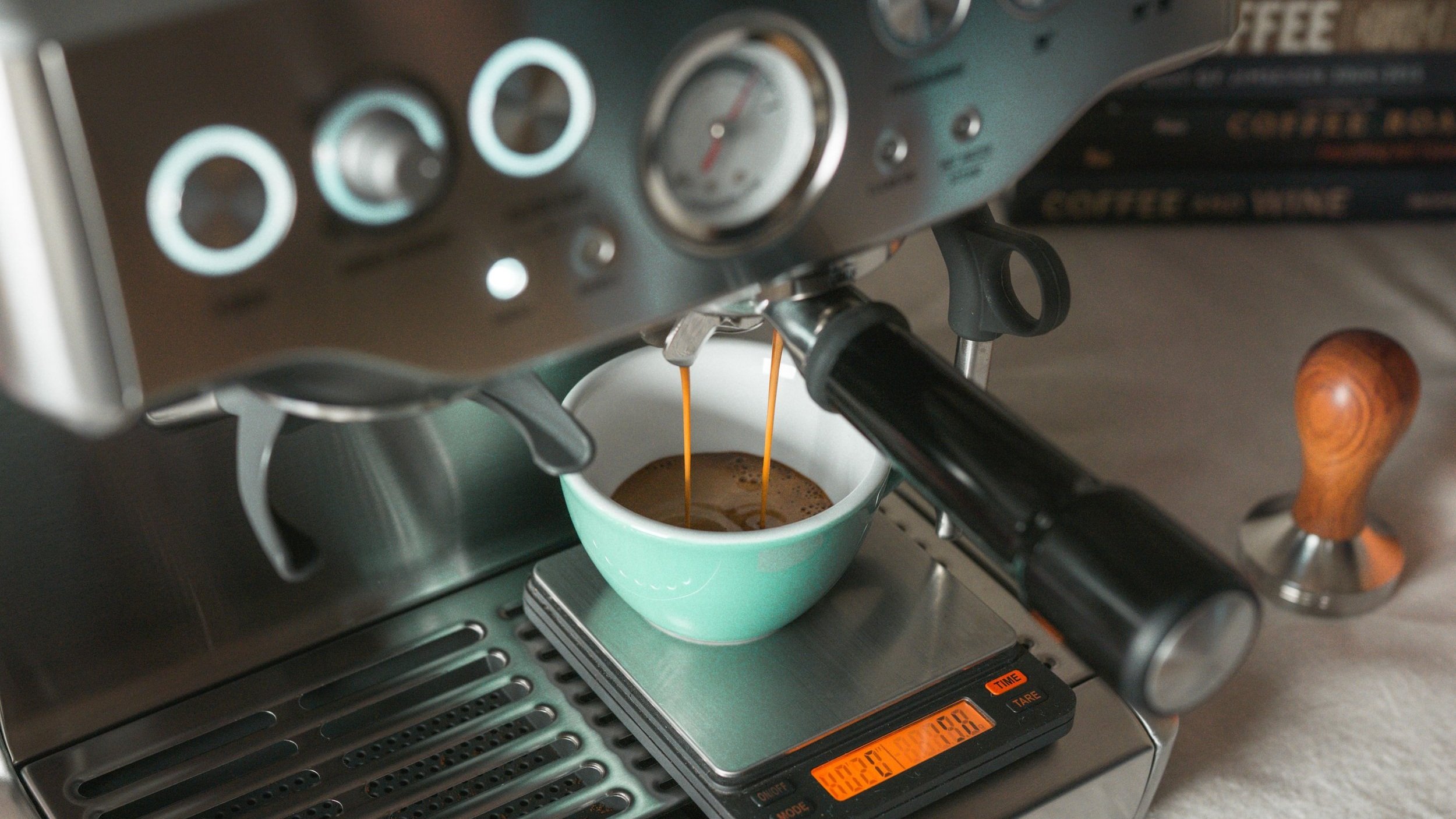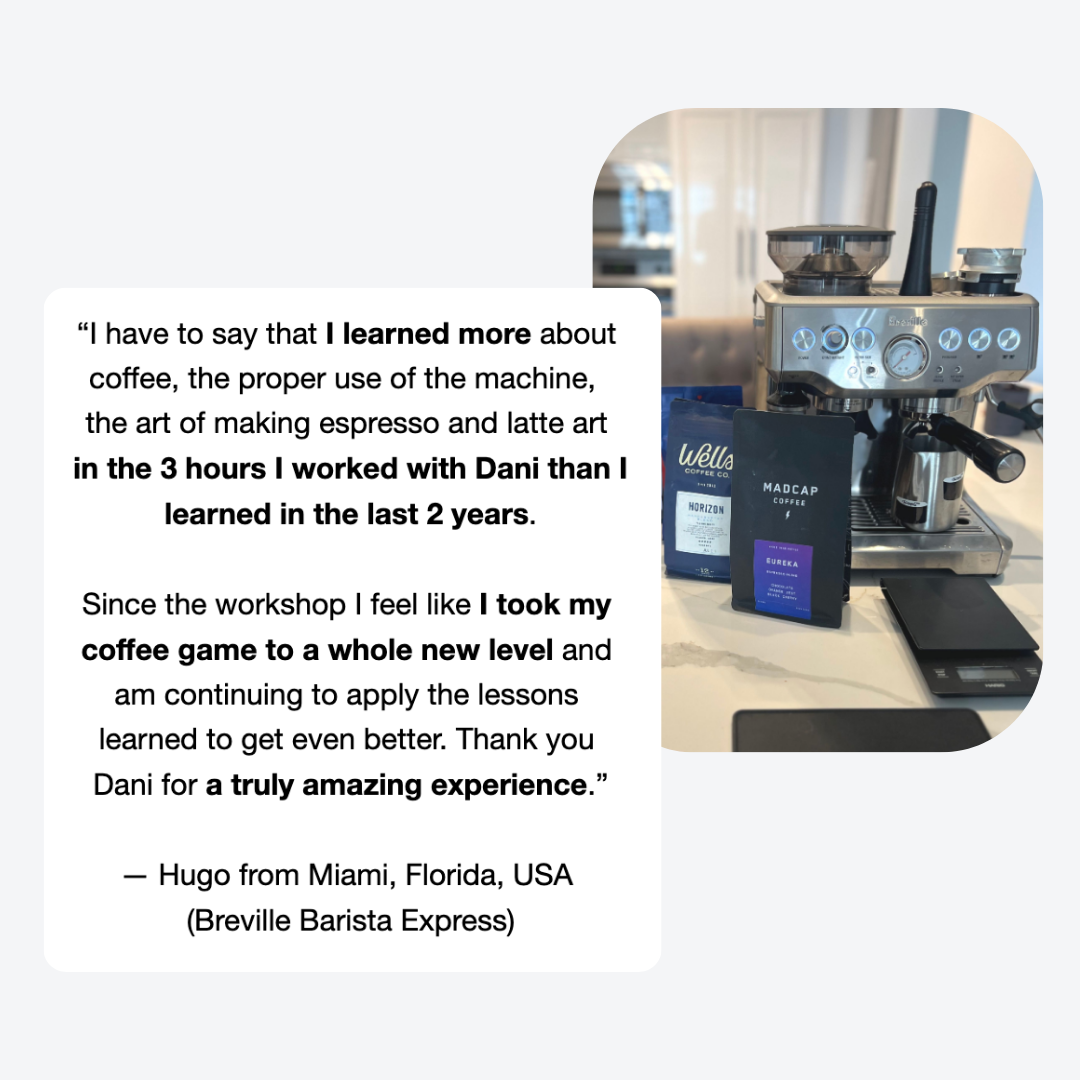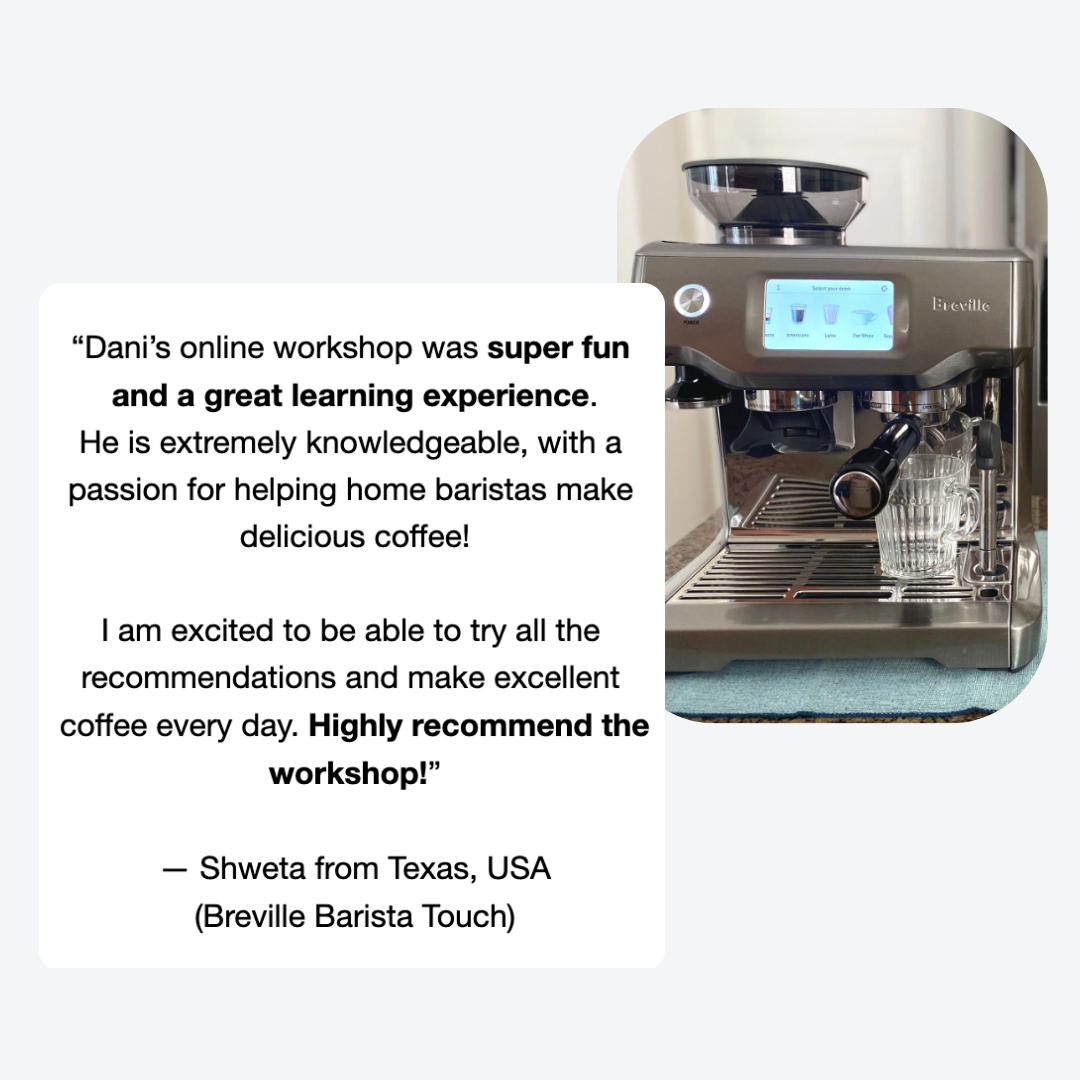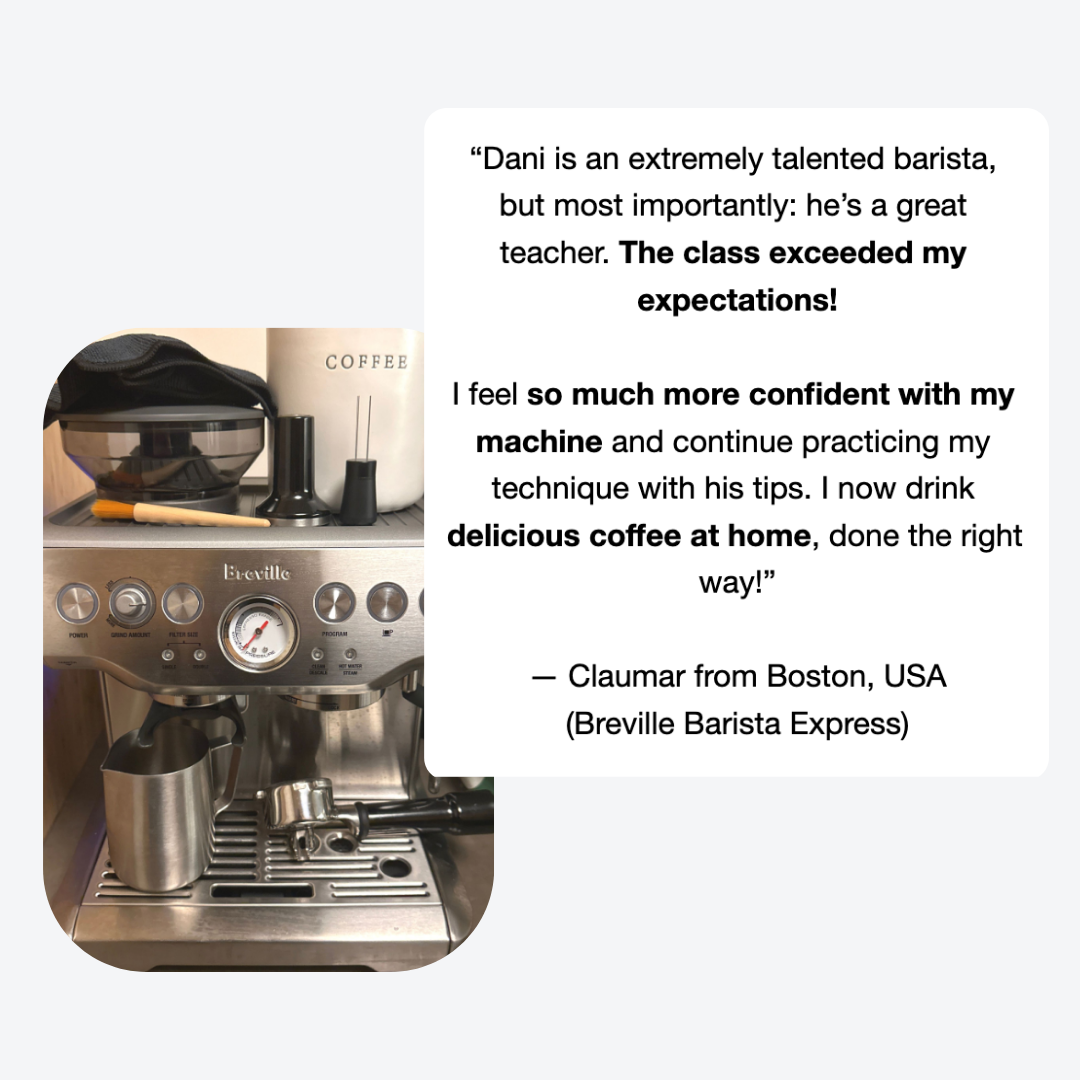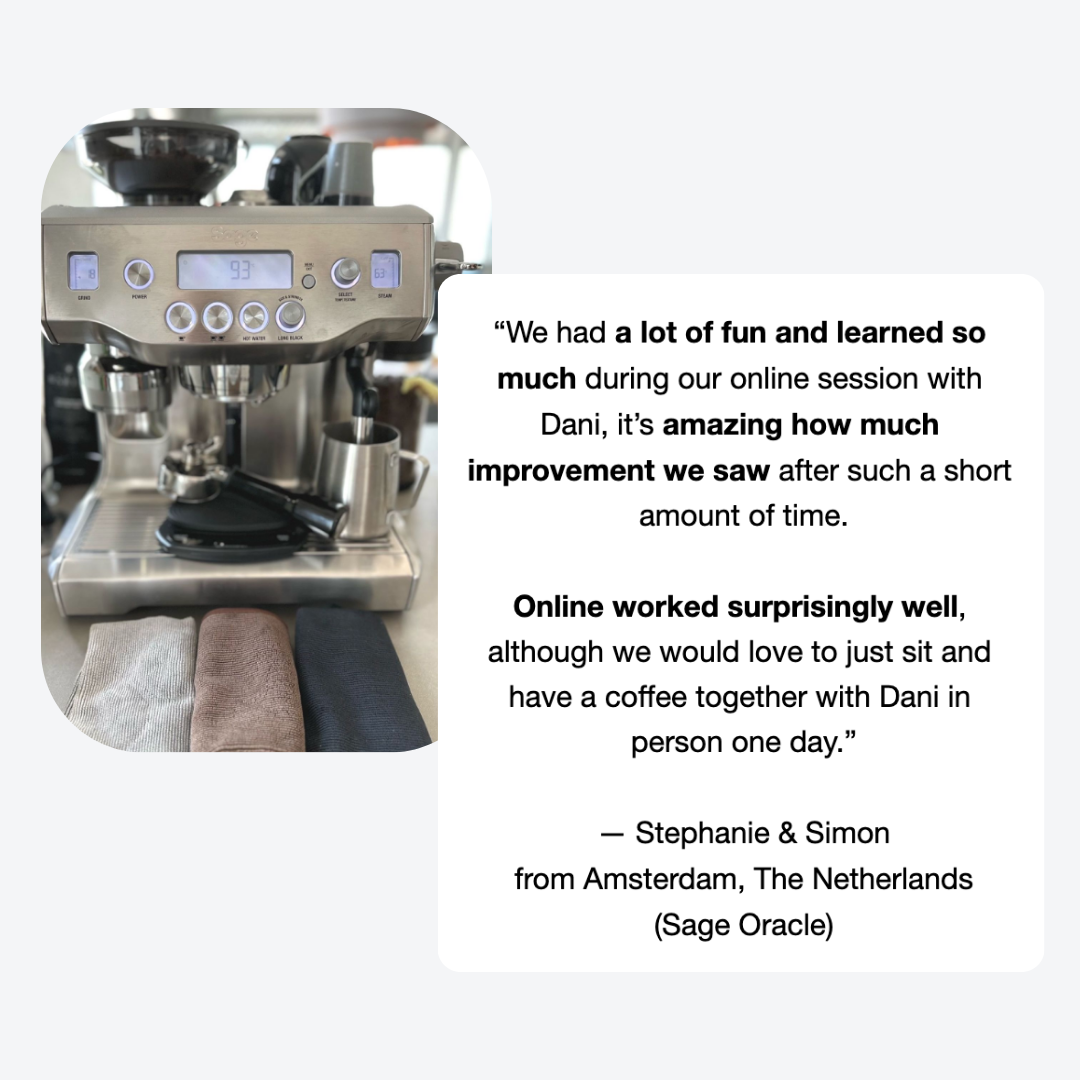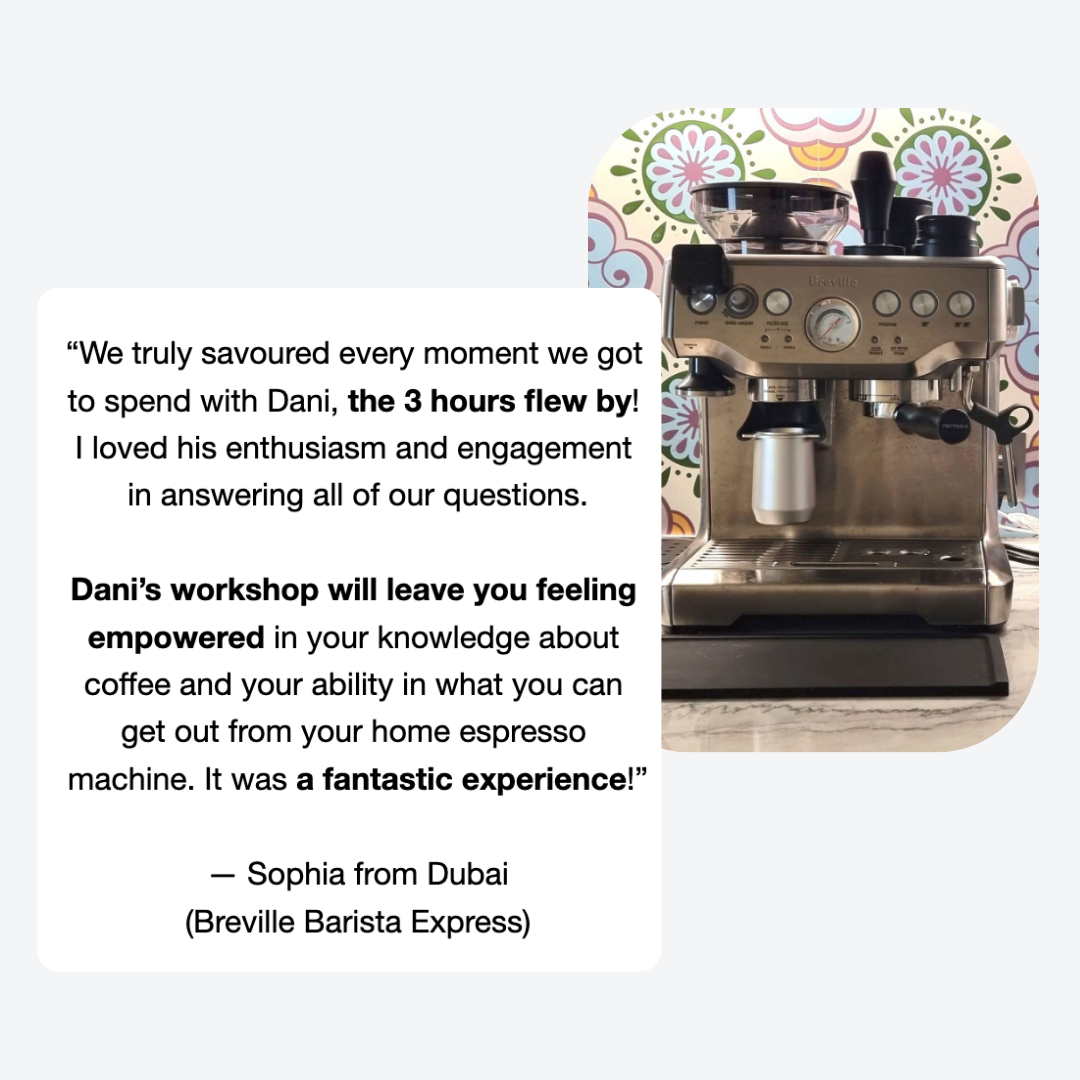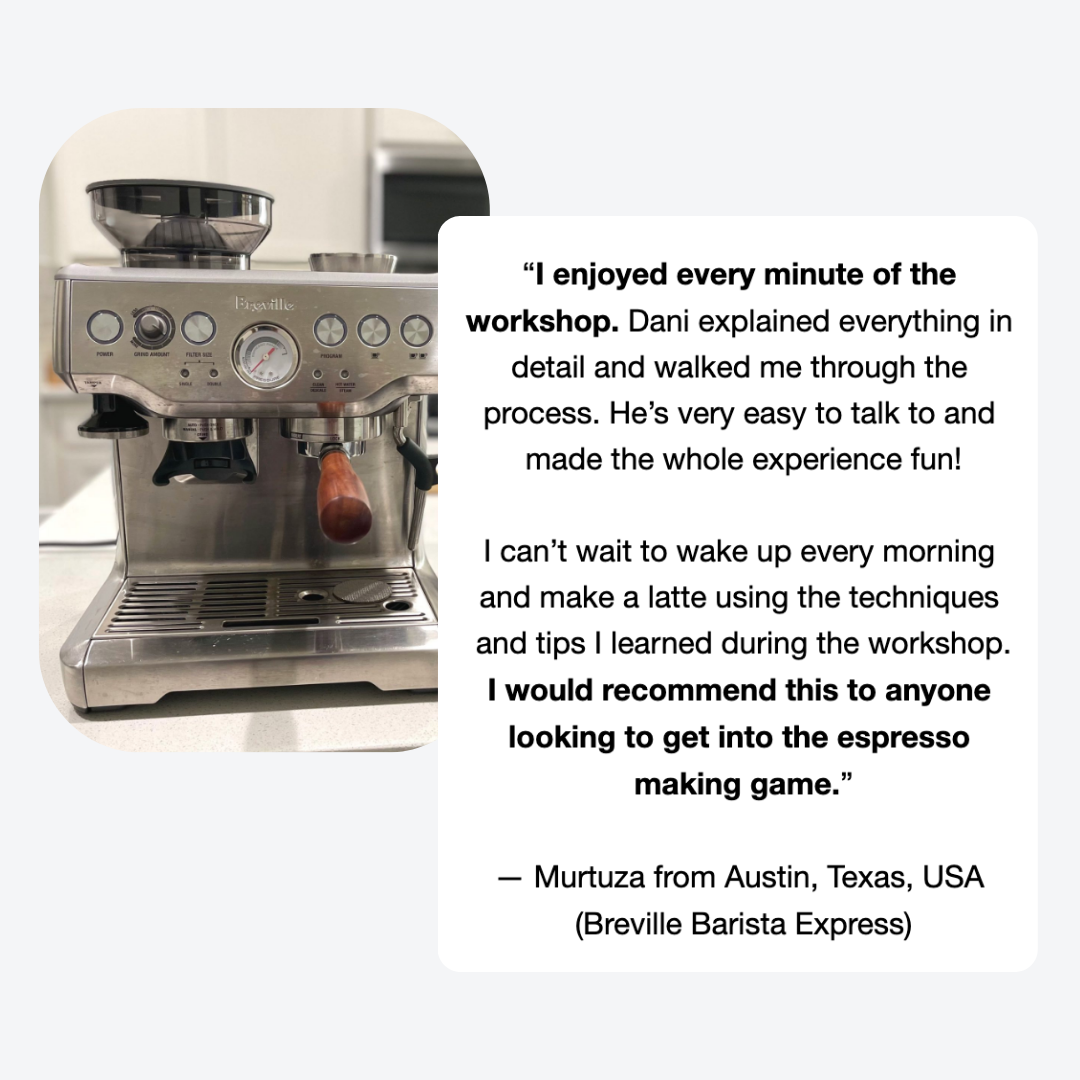How to get the most out of the Sage or Breville Barista Express
A few tips on how this home espresso machine works and how you can improve your coffee making experience with it
Disclosure: This blogpost contains affiliate links, meaning we get a small commission if you decide to make a purchase through our links, at no cost to you. The products we mention are the ones we believe in.
Struggling with the built-in grinder?
Look for medium roasted coffee beans
What I learned over time by working extensively with the Sage or Breville Barista Express home espresso machine is that its built-in grinder works best with medium and medium-dark roasted coffee beans.
While I certainly don’t want to discourage you from experimenting with lighter roasts, expect the dial in process to be a bit finicky until you are able to make an espresso shot that is balanced and doesn’t taste overly acidic.
Regarding lighter roasts, my assumption is that the grind size distribution is highly inconsistent, thus the variability in the quality of the espresso shots.
Improve the quality of your espresso
Use the Manual mode
By default, using the pre-programmed shot volume setting for 2 cups, the Sage or Breville Barista Express extracts about 60 ml of liquid espresso in the cup. While some might not necessarily dislike it, I find this brew ratio to be way too high for me, with the espresso weak and watered down.
One easy solution is to use the machine’s Manual mode and stop the extraction close to a 1:2 ratio (e.g. using 17 grams of ground coffee and extracting 34 grams of espresso). This way, the espresso will have more texture and it will be more rich in flavor too, which will also help when used in combination with steamed milk.
Ensure consistency and reduce waste
Consider using a scale when making espresso at home
One of the key things I recommend during my home barista workshops is to use a scale when making espresso at home, in order to weigh the dose (the amount of ground coffee used), as well as the yield (quantity of liquid espresso in the cup). Doing so will help you reduce waste and have consistent results time and time again.
The scale will also help you stay close to the 1:2 brew ratio. Of course, nothing is set in stone and this ratio can change depending on taste preference and roast style of the coffee beans used (i.e. lower yield for darker roasts and higher yield for lighter roasts), but I do recommend it as a good starting point.
I hope you find these tips helpful and, if you’d like to dive deeper, you may consider our espresso and latte art home barista workshops. Happy brewing!
P.S. Did you find this article helpful? Please consider supporting our work for just the price of a cup of coffee here. Thank you so much!
And, if you enjoyed reading this article, you might find the one here interesting too – Easy checklist before making espresso on the Sage or Breville home espresso machines

